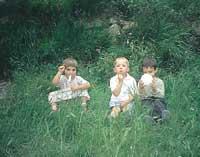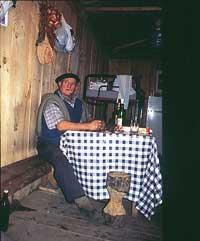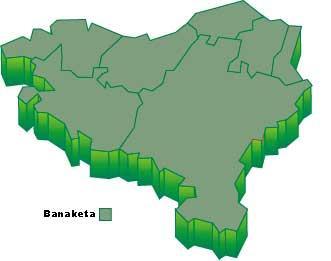Naked mammal standing

Let us imagine that some beings alien to this planet come to Earth, or if we want, to Euskal Herria. Would you find any animals? What is the animal that can always be found in our territory, from the coast to the high mountains, from the forests to the desert of the Bardenas? Of course, reader, to everything: man. And of course, the same thing happens all over the world.
The human being has adapted to areas with temperatures between -50 and +50 degrees, from the sea level to a height of 5,000 meters and from the deserts to the jungles, and in few places we can reach this planet without any human being or any sign that has left. Surprising, inventor, diminutive, …, we could describe man as he wants, but whether he wants or not, although sometimes he forgets us, he is an animal.
Species: Homo sapiens sapiens Family: hominid Order: primates Class: mammals |
They are human beings, mammals, vertebrates dressed in hair; primates of the Hominids family and the genus Homo. Intelligence, articulated language, high-volume brain, kneading hands and erect posture are some of its characteristics. Apparently, human ancestors were animals from the African jungles that looked like monkeys. 3.5 million years ago these primates moved from forests to open landscapes and made a very important change: they took an erect stance. Subsequently, these ancestors began to spread from Africa to other territories, and thanks to their ability to change culture or the environment, they adapted to all. In Euskal Herria, for example, human remains of around 150,000 years have been found.

The present man ( Homo sapiens sapiens) is the result of thousands of years of evolution and the truth is that it is not difficult to distinguish this species. He is a mammal with a few hairs, almost naked, that moves on two legs. These characteristics make it virtually impossible to mix with another species. The male and female are best distinguished by their genital study, but in general they are characterized by a stronger male and a more rounded body. As for the measure, although we measure the rest of the animals from the end to the tail, the length of human beings, in the circular of foot, we consider it from head to foot. Thus, females have an approximate length of 160 cm and an average weight of 60 kilograms and males somewhat more, 175 cm and about 75 kilos. The predominant color is white, although it may vary depending on the region. However, the possibility of moving more and more easily has increased the mix between different human groups and can mean homogenization in the future.
Humans are omnivorous, mammals that eat everything. Typical opportunists have perfectly adapted to local foods. The ancestors were probably hunters and fruit gatherers and the high percentage of their diet was animal meat. Today, however, it can be said that man has a wider diet than ever.
Although the exceptions are easy to find, the human being is an animal that works in broad daylight and normally rests during the night. For thousands of years, hunting and fruit harvesting were the main activities of the day of nomadic human groups, but for 10,000 years, after the discoveries of grazing and agriculture, life changed radically. With these activities it was transferred to the productive economy and with the surpluses achieved it obtained a high degree of specialization. In this way, he became sedentary and each person began to deal with a specific task.
These great discoveries caused a strong increase in the population to date on our planet. Currently, 6 billion people live on Earth (mostly concentrated in large cities) and, if not, this growth will continue in the following years. In Euskal Herria, of course, the same thing has happened. Since the Neolithic, and especially since the beginning of this century, population growth has been important. However, as in the advanced countries, in recent times the population has not grown and today we are 3 million people.

To understand it, however, it is necessary to analyze the reproduction of the species. Reproduction can occur throughout the year and after a pregnancy of 9 months, in each birth normally only a child is born. In recent years, every woman in the advanced countries has decreased her number of children throughout her life, which is currently 1.5 children. The learning process of these children is very long and until they separate from their parents they spend quite a few years. In turn, life expectancy has elongated relatively in a few centuries. Today, in the advanced countries it is around 80 years, but unfortunately in many other territories it is only 50 years.

Undoubtedly, this standing mammal has had a great success. However, the future may not be so simple. The increase in population and the level of development and consumption in the advanced countries, hinders the lives of human beings from other countries and, in addition, the exploitation of the natural resources of this planet carries a great speed. There is no doubt that the planning of all activities will be necessary to keep our species and the imbalances between the different countries are equal.
Finally, I would like to add something: this is the last article in the series “Fauna of the Basque Country”. Although so far we have written about many animal species, the future of them all depends on the people and our activities will depend on the wealth of fauna our sons and daughters know. Unfortunately, there are already thousands of animal and plant species that the coming generations will not know and this trend seems more and more rapid. Something is in everyone's hands. I want to thank Jesus Altuna for his collaboration in the article.





